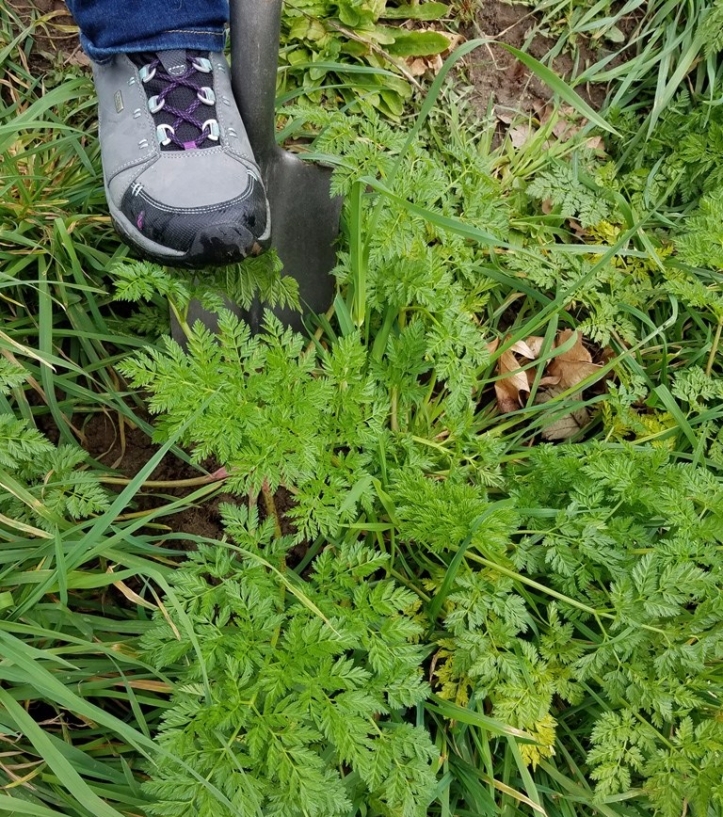
Watch out this spring for poison-hemlock (Conium maculatum), a common noxious weed that’s toxic to people and animals. The stems of young poison-hemlock look like those of carrots and other members of the carrot family, but eating any part of the plant can be fatal. Its toxins may also be absorbed through the skin or respiratory system, and even dead plants can remain poisonous for up to three years.
Poison-hemlock is widespread in King County: you can find it along the borders of community gardens and public paths, as well as on roadsides, in riparian areas, ravines, fields, ditches, and vacant lots. While it prefers moist soil and sun, it can also be found in drier and shadier areas.


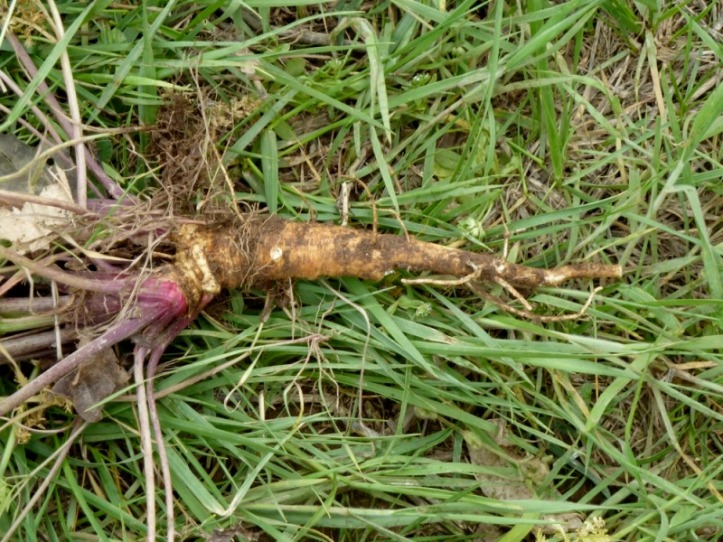
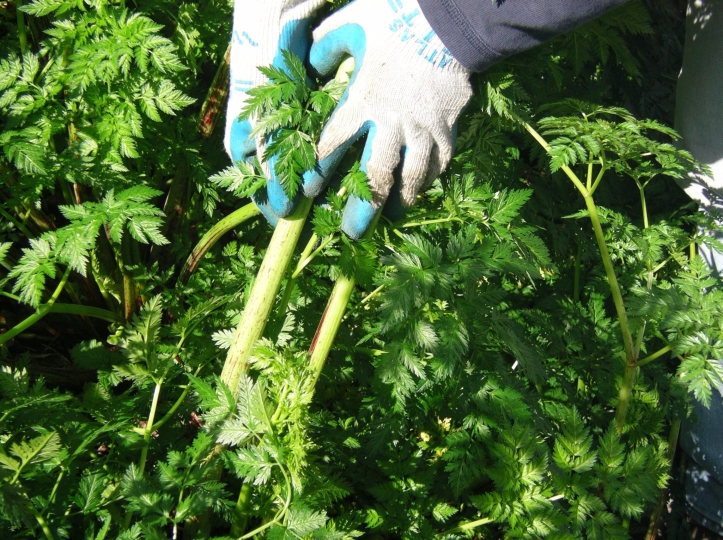
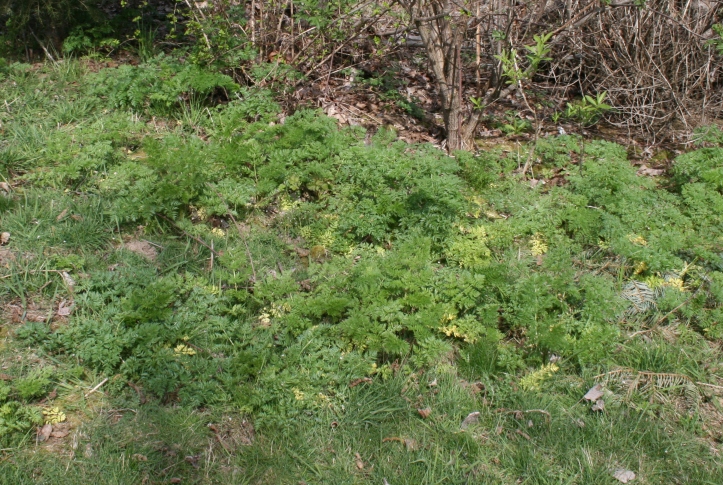

In humans, symptoms of poisoning include pupil dilation, dizziness, trembling, heartbeat slowing, central nervous system paralysis, muscle paralysis, and death due to respiratory failure.
If you suspect poisoning, get help immediately. For people, call Poison Control: 1-800-222-1222. For animals, call your veterinarian.
In both humans and animals, prompt treatment can reverse poison-hemlock’s damage.
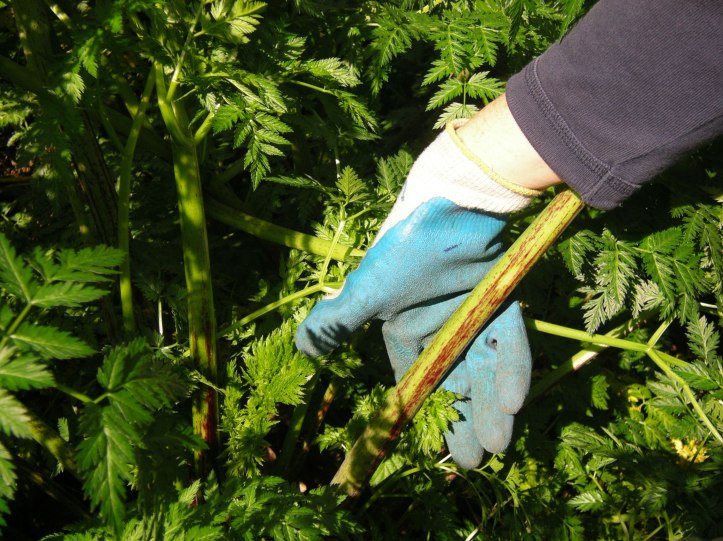
If you find poison-hemlock on public property, please notify the property manager or report it to us on our online form and we can notify them. Poison-hemlock is so abundant in King County that it’s control isn’t required. Still, the plant should be removed whenever possible, above all in areas visited by people, pets, or livestock.
Be sure to wear gloves when eradicating this plant. If you mow it, wear a dust mask or take frequent breaks. Place plant parts in a plastic bag and throw away in the trash. Do not compost.
If you have any questions on poison-hemlock or other weeds, feel free to call us at (206) 477-9333 or email noxious.weeds@kingcounty.gov.
For other control methods and more information, visit:
King County Noxious Weed Alert: Poison-hemlock (Conium maculatum)
King County Noxious Weed Control Program: Poison-hemlock (Conium maculatum)